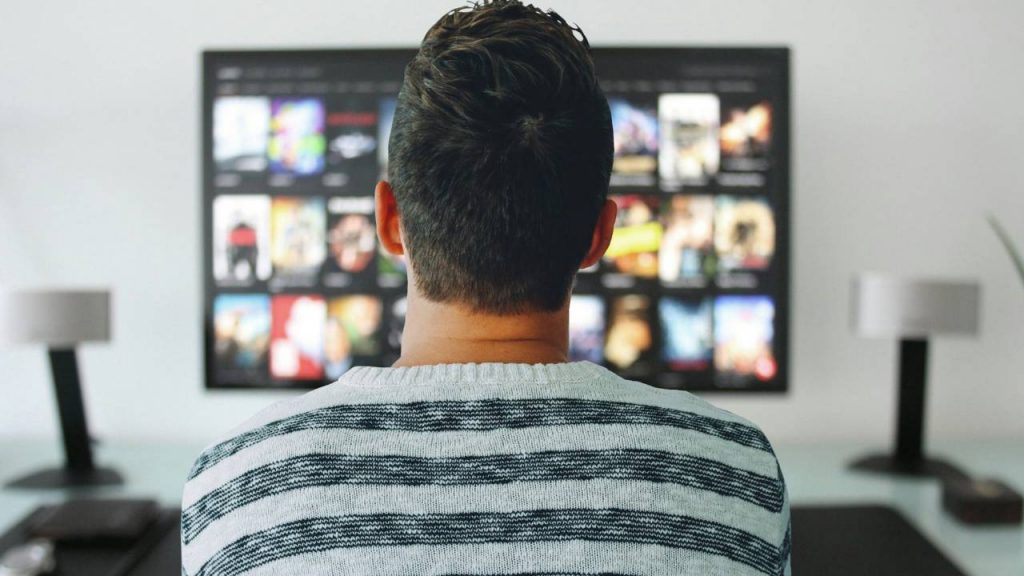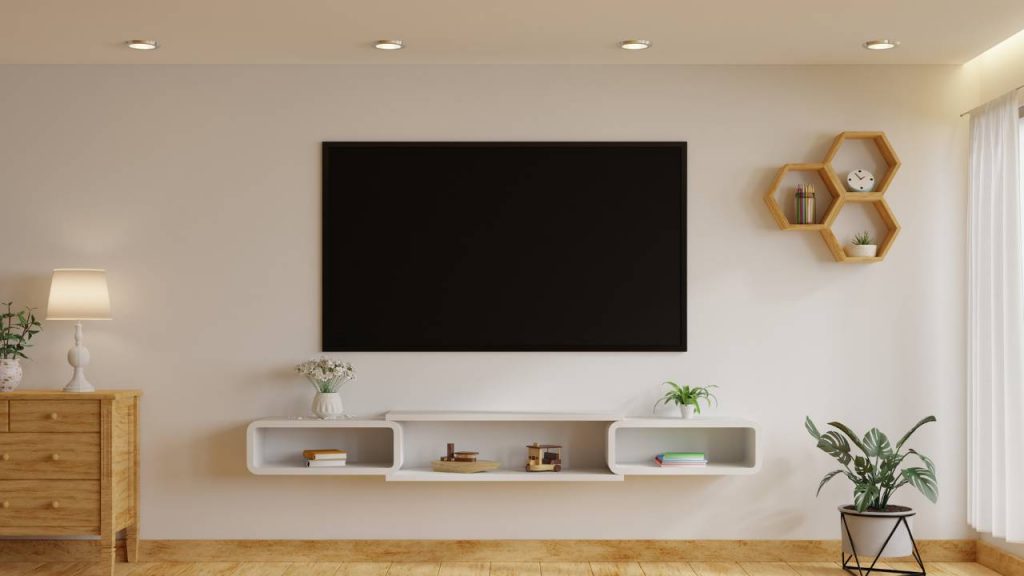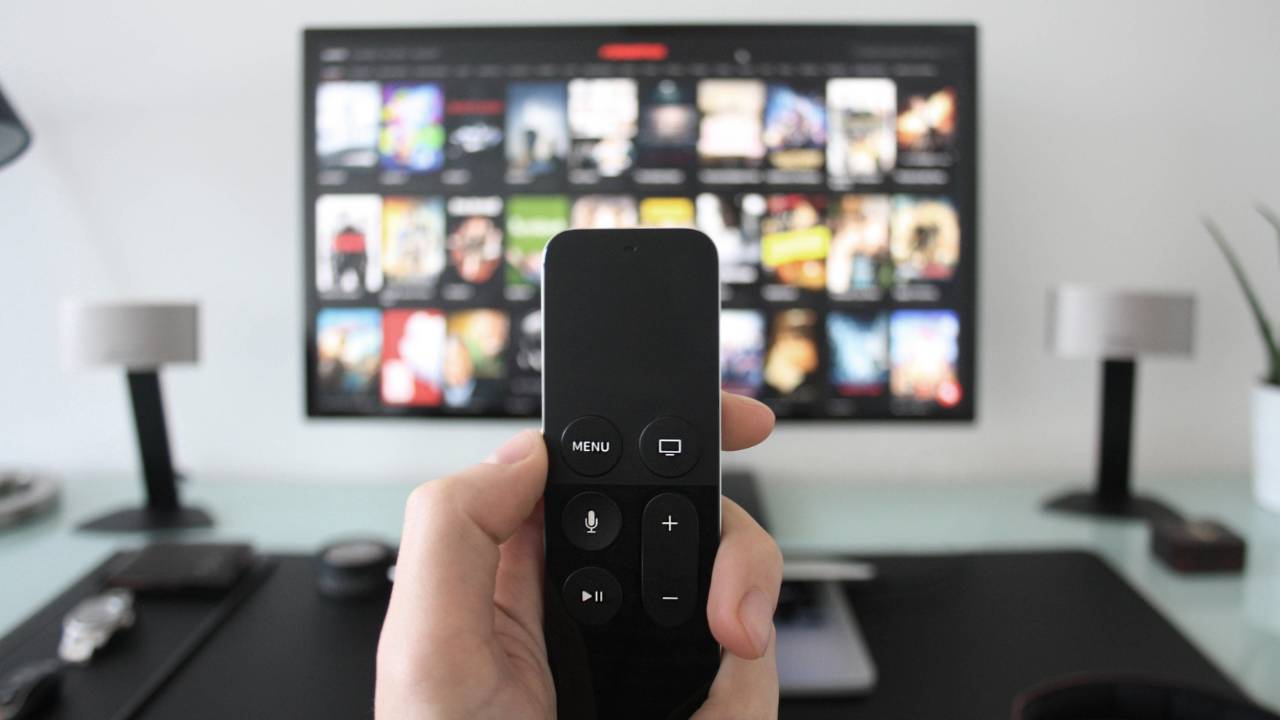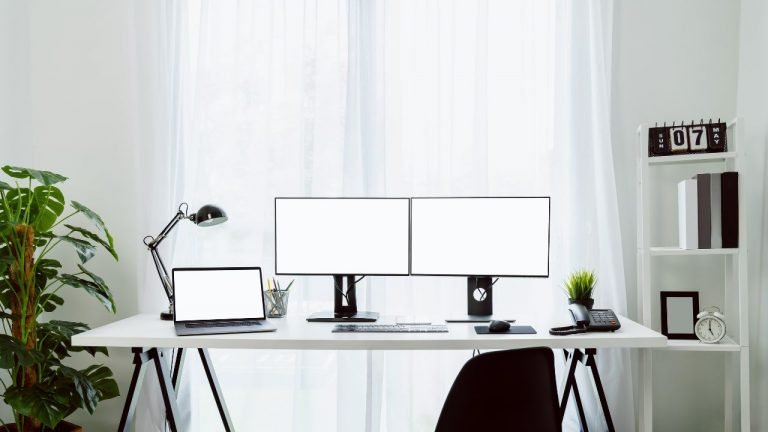What Size TV Should You Choose For Home Office?
Looking for a new TV for your home office? Well, that’s a major upgrade. But, do you know what size TV would suit your home office? Because the wrong size can cause your eyes to strain. So, you don’t want to make an incorrect decision at all.
The right size of the TV depends on the distance between the wall and your sitting arrangement. Having a 1.6:1 ratio between the TV wall and your office desk provides the best viewing experience. Your eyes don’t get strained nor do the images look distorted.
Choosing any accessory for your home office has a huge impact on your productivity. One bad choice can lead to a significant decrease in performance. Now, we don’t want that to happen, do we? So, before you fixate your mind on a particular TV, read the whole article.
How Do You Measure A TV Screen Size?
We think it makes the most sense that we learn how to measure the TV screen first. Some people think a screen size of 32 inches means the TV is vertically that long. But it’s not true. In fact, TV and mobile phone screens have always been measured diagonally. That means you need to measure the distance between one corner to another. Make sure you are using the “inches” side of the measurement tape. That’s how you get the numbers.
Do you wonder why is it measured that way? Well, from what we know earlier TV screens didn’t have edges or cut corners. Instead, those models had round screens. So, measuring diagonally was the only option.
Moreover, it’s better than measuring both the width and length of a screen. Then, you would have two numbers to consider. And, to be honest, it would be hard to visualize or even compare different models.
Thanks to the diagonal measuring technique, every TV screen in the world needs only one number. There’s no complication at all. A 32” TV is definitely smaller than a 42” one. That’s true for both width and length-wise.
So, next time when you visit TV stores, you know how they measure screens.

What Size TV Should You Choose For Home Office?
When it comes to TV, the bigger is not always the better. If you are sitting close to the screen, a big screen will be hard for the eyes to keep up with. It not only affects your experience but stresses the eyes out. That’s why maintaining the right size for any given distance is the key here. So, without further ado, let’s check out all the techniques for finding the right TV size for your office.
Method 1: The Old Way
Suppose you have a couch situated 5 ft away from the TV wall. So, converting the ft into inches, we get 60 inches, right? Now, the first formula requires us to multiply 0.835 by that number. That brings us (60 x 0.835) = 50.1 inches. So, the TV screen size ideal for such viewing distance is 50 inches.
That way, you can calculate the screen size for any office setting be it small or large. Take another example, the office is larger with a 7 ft or 84 inches distance between the wall and the couch. So, what will be the ideal TV size? Following the same formula, we get (84 x 0.835) = 70.14 inches. That means you have to go for a 70 inches TV for a better experience.
| Minimum Distance Required | TV Screen Size |
|---|---|
| 4 ft | 42 inches |
| 5 ft | 50 inches |
| 6 ft | 60 inches |
| 7 ft | 70 inches |
The first part of this method is over. If you are flexible with changing the sitting arrangement based on a Tv size, we have a different formula for you. Go to the store and pick a TV you think is nice. Check out its screen size in the manual. Suppose, it’s 42 inches. Now, take the number and divide it by 0.835. That gives us 50.3 inches. Converting it to ft, we get 4 ft.
Now, check the table again. It suggests 42 inches to 4 ft distance, right? So, that’s how you can also find the best viewing distance for a particular TV size.
Note: Even though this method works, some people think the screen size should be downsized a bit. That’s why the next method is more relevant.
Method 2: The 1.6:1 Ratio
Another sophisticated method is maintaining a 1.6: 1 ratio between the distance and TV size. The method implies that you can afford to have a distance that is 1.6 times bigger than the screen itself. It is by far the most popular technique to identify the right TV size.
For the first part, we will simply take the TV screen first. Suppose, you want a 32 inches TV. Okay, according to the method, you have to multiply 1.6 by 32 inches. That gives us (32 x 1.6) = 51 inches. Let’s convert it to inches. We finally get (51/12) = 4.25 ft. So, that’s how you retrieve the ideal distance.
| Distance | Screen Size |
|---|---|
| 4 ft | 32 inches |
| 5 ft | 42 inches |
| 6 ft | 42 inches |
| 7 ft | 50 inches |
| 7 ft – 8 ft | 55 inches |
As you can see, it is slightly different from our previous table. That’s because we have used a different ratio to find the ideal setting and size. According to this method, if the distance is 3 to 4 ft, you shouldn’t go above 32 inches. For 5 to 6 ft, 42 inches TV would work fine. And, 55 inches is what we suggest for a distance between 7 ft to 8 ft.
Now, there’s a counter way to perform this calculation. We will show you that too. suppose, you can’t change the desk location at all. It’s the Tv size that needs to be customized to cover the distance clearly. For that, measure the distance first. Let’s assume it’s 60 inches or 5 ft. according to the 1.6:1 rule, we have to divide 60 by 1.6. which gives us 37.5 inches. Since it’s not a usual size, we will look for the closest option, which is 42 inches.
Method 3: The 1:1 Ratio
Next, we have the 1:1 ratio method. In this formula, the calculation is blurred out to make things simple for you. It says that you should go with the same size for the TV as your distance from the wall. As you can see in the table, we have suggested a 60 inches TV to cover the viewing distance of 60 inches. So, the ultimate ratio between these two phenomena would be 1:1. That’s how it works.
| Distance From The Wall | TV Size |
|---|---|
| 3 ft or 36 inches | 32 inches |
| 4 ft or 48 inches | 50 inches |
| 5 ft or 60 inches | 60 inches |
| 6 ft or 72 inches | 70 inches |
But you may wonder, why did we choose a 50 inches TV when the distance apparently is 48 inches? Well, that’s because 48 inches is not within the usual size range. In other words, you won’t find a 48” TV. So, we had no choice but to stick with what was closest to the number.
Of course, the size suggestions in this method are bigger than the previous ones. That’s because we are not applying any formula or ratio. So, even though it’s a safe way, you might end up spending more than what you actually need. Only use this technique if the formulas really confuse you.

Method 4: Use Your Imagination
The fourth method is more meticulous than the above three. It doesn’t contain any mathematical formula. Instead, it urges us to visualize which TV size would look best on the wall. For that, just cut some cardboard with images in different screen sizes.
Now, attach them one by one on the wall. Change your sitting positions and try to visualize how it would feel to watch this size of a TV. We don’t suggest you only rely on this method. But use it to complement the techniques we described here. That way, you won’t leave any room for error. After all, buying a TV is a big investment.
Is It Okay To Keep A TV Inside The Home Office?
Normally, TV is seen as a way for entertainment; hence, considered unnecessary in an office setting. So, should you go against this mindset and get one? Well, it depends on why you actually need a TV first of all. If you want to track the news or the stock market, having a big-screen TV on the wall makes sense.
Plus, the background noise allows you to feel like you are in a crowded place just like an actual office. For some people, that’s the key to boosting performance and erasing any kind of boredom. Apart from these functionalities, you can always relax and take a break from the work. All you have to do is switch to an entertainment channel and have some “fun” time.
But there’s a downside to this as well. If you are a heavy procrastinator who gets easily distracted, having a TV can work against you. By that, we mean, you might get so caught up with the shows that the tasks remain untouched. So, it’s a very sensitive issue. We suggest you bring a TV inside your office only if you have a valid reason.
Where Should You Place The TV For The Best View?
Of course, you would want to have the best viewing experience after doing all this research. But it’s a little tricky to find the right spot to mount your TV. However, it’s not too difficult, we promise.
The most important thing to consider is where your home office is located. Is it a closet, bedroom, or dedicated office? For dedicated offices, the process is a bit easier. You simply look for the window. Place the TV a little left or right of the window depending on your preferences.
But make sure you don’t put it right in front or against the window. Both have severe disadvantages. Keeping the screen against a window can initiate the glaring effect. It washes out everything on the screen due to the sunlight entering the room.
Plus, the TV shouldn’t be directly against the door. That way, your visitors can see your back as they enter the office. That’s very unprofessional. Also, for a better view, make sure the TV’s distance from the floor is accurate. It shouldn’t be too low or too high. Only then, you can watch it comfortably.
Resolution Matters
The best view depends on the resolution as well as your angles. So, you have to be aware of what type of resolution suits your requirement the best. Otherwise, the image won’t be as sharp as you imagined.
Here’s how it works. The standard resolution for a modern TV is 4K (3840×2160). As you can see, it’s double the number of pixels a traditional 2K or full HD TV offers (1920×1020). And, if you want something extravagant, go for the 8K (7680×4320).
You might already know but more pixels refer to better picture quality. Normally, if you watch TV from far away, the resolution doesn’t matter that much. However, when you are inside the minimum distance zone, the trouble begins. You start to notice the dark corners of your TV or the picture simply looks washed out. That’s why depending on your sitting arrangement, you should choose an appropriate resolution for the best viewing experience.
Before You Go!
Now that your problem with the TV size and its ideal location is solved, focus on other aspects of the home office. Especially, the desk because that’s where you would be sitting all day and watching the new TV.
Placing it in an appropriate position can highly influence your productivity and viewing angle. So, check out your take on where to put your desk inside a home office.
Hopefully, you will get something valuable out of it.






